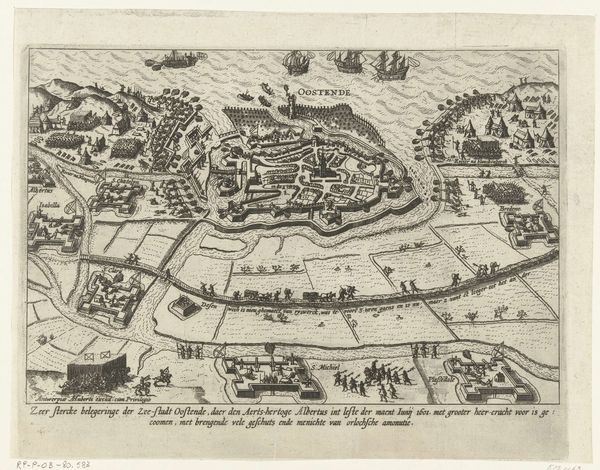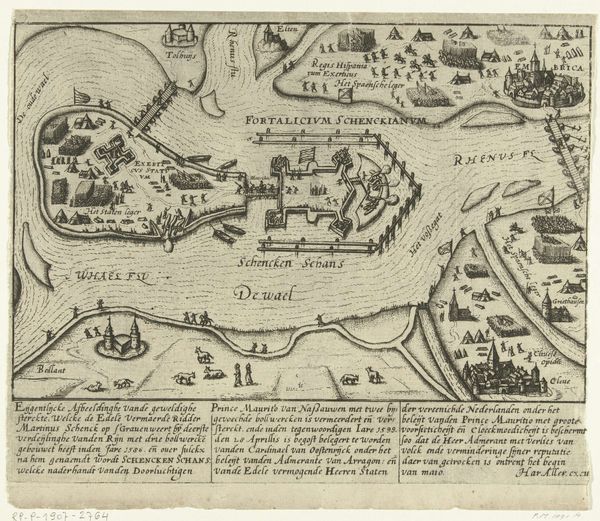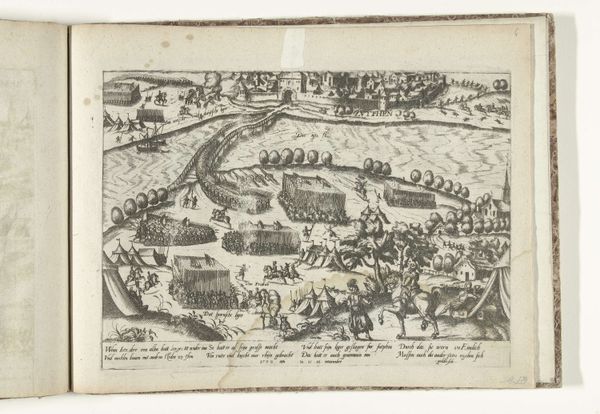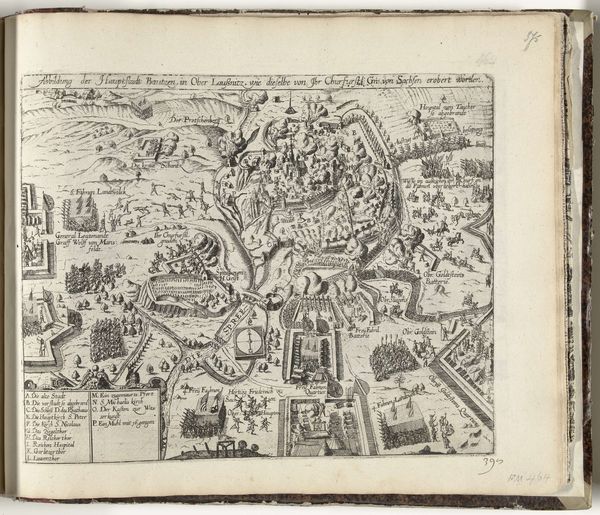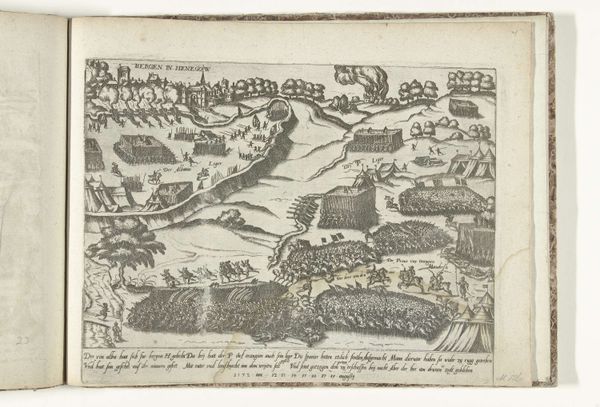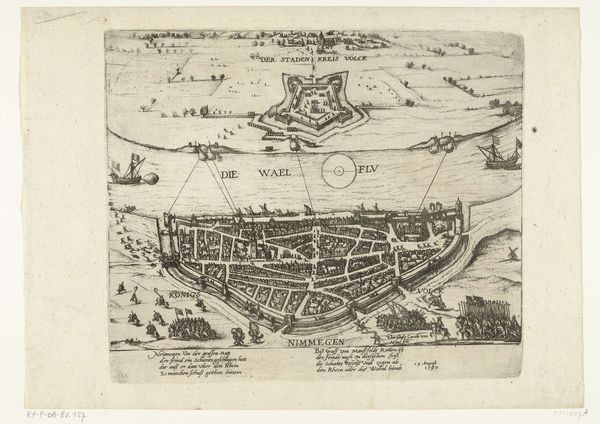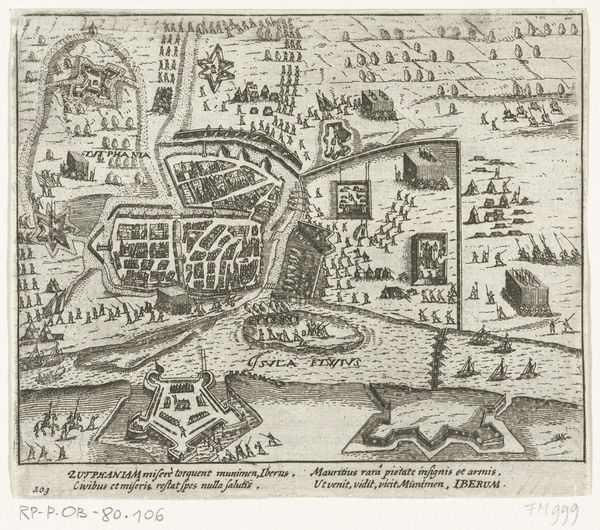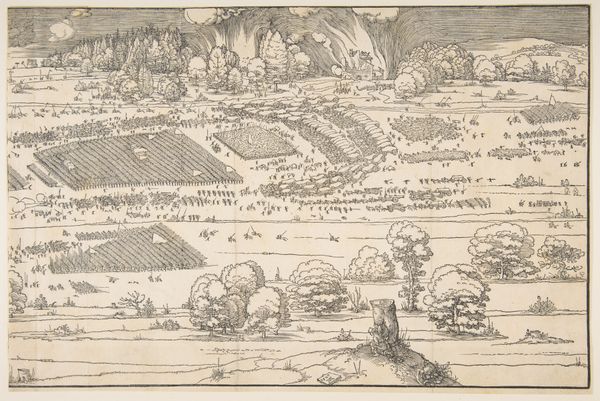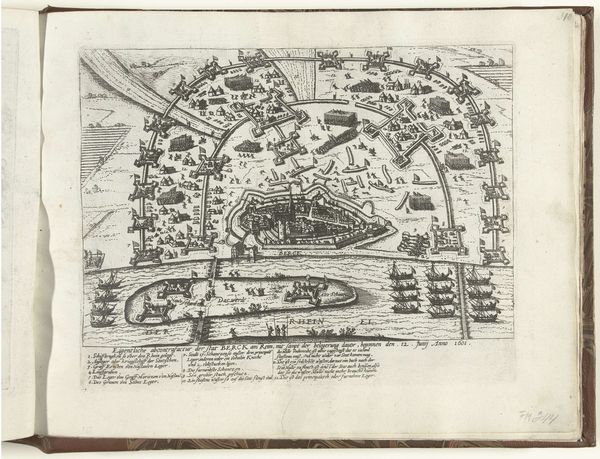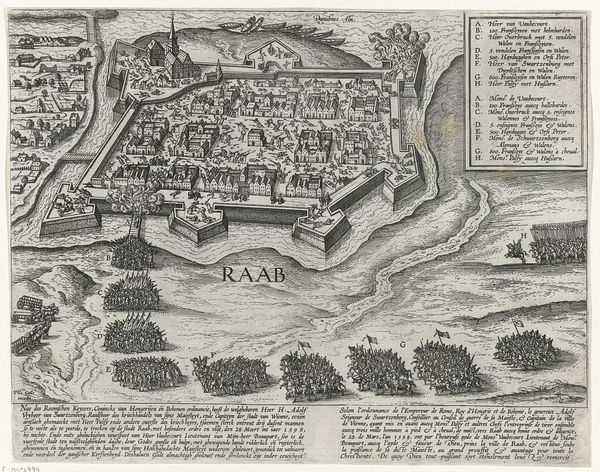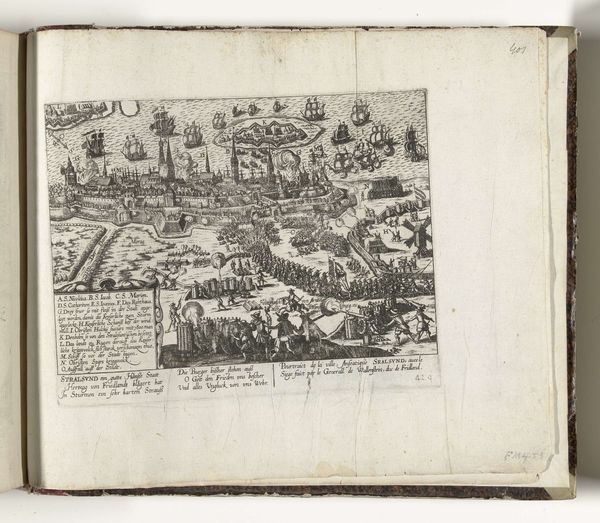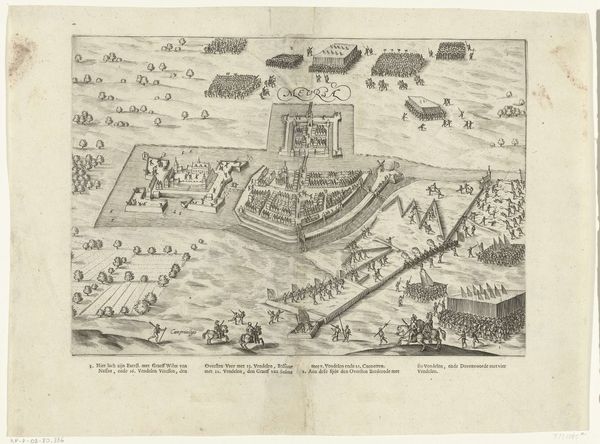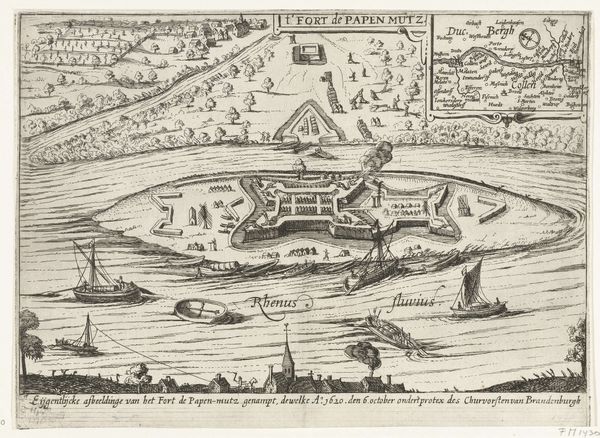
print, ink, engraving
#
dutch-golden-age
# print
#
pen sketch
#
old engraving style
#
ink
#
cityscape
#
history-painting
#
engraving
Dimensions: height 219 mm, width 325 mm
Copyright: Rijks Museum: Open Domain
Curator: This print, dating from 1597 to 1599, presents "Beleg en verovering van Lingen, 1597," or, in English, "Siege and Conquest of Lingen, 1597." Although the maker is anonymous, it resides in the Rijksmuseum’s collection, created with ink and engraving techniques. Editor: My immediate impression is that it feels intensely organized, a precisely rendered overview where everything has its designated place. I like the visual density of the forms, especially the walls surrounding the town itself, all laid out. Curator: The work, characteristic of the Dutch Golden Age, isn't merely a cityscape, but a history painting as well. It illustrates the siege and capture of Lingen, a key event in the Dutch Revolt. This siege resonates deeply in Dutch cultural memory. Editor: Definitely! The composition emphasizes that feeling. Look at how the artist balances the representation of the city and its architectural structure with the disposition of forces surrounding it, utilizing semiotic relations to suggest domination. The line work contributes to an air of serious documentation, the calm eye of cartography applied to the tumult of war. Curator: Indeed. Notice how the symbols function: the orderly camps contrasted with the town, conveying not just a physical space, but also a psychological dynamic—the encroaching external forces versus the contained urban sphere, where fear and hope must have coexisted. This piece resonates even today because it depicts a city caught in the grips of historical transformation. Editor: Thinking of its aesthetic structure, I'm intrigued by the way the print manages to depict a bird's-eye view and yet, introduces ground-level perspective. It is breaking from simple reproduction and attempts an expressive form. It also contributes a sense of depth to what is otherwise a relatively flat picture plane. Curator: This capture of Lingen in 1597 holds deep meaning. We still find value in exploring the relationship between the city’s architectural symbolism and historical significance. Editor: Agreed. Analyzing its compositional techniques opens the piece to revealing expressive depths beyond that which simply meets the eye.
Comments
No comments
Be the first to comment and join the conversation on the ultimate creative platform.
